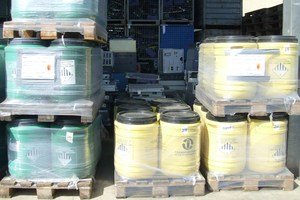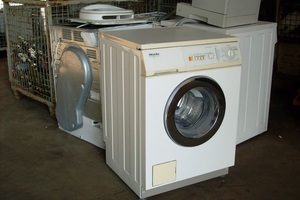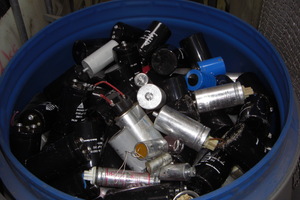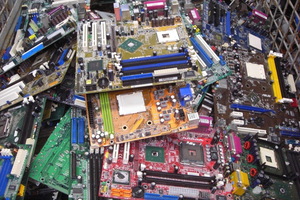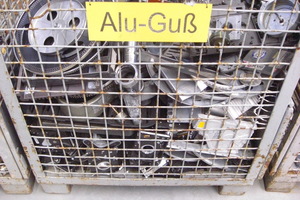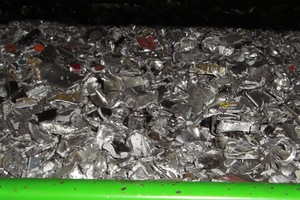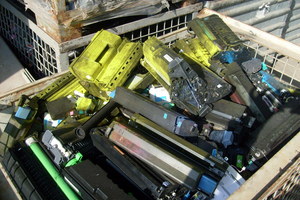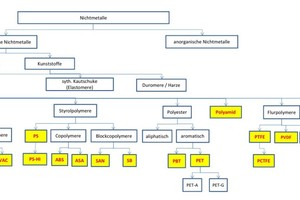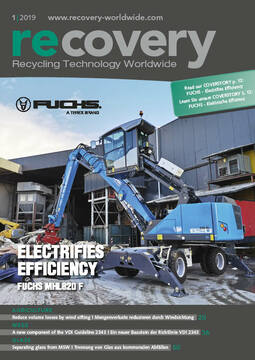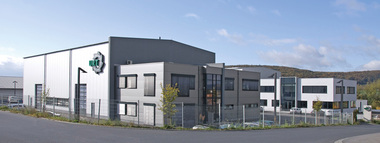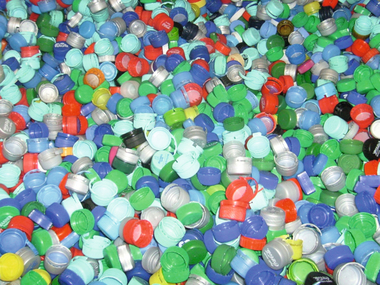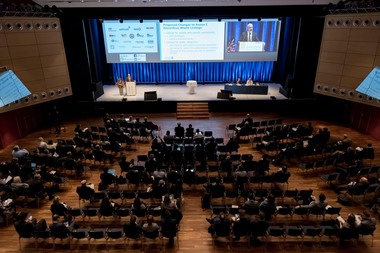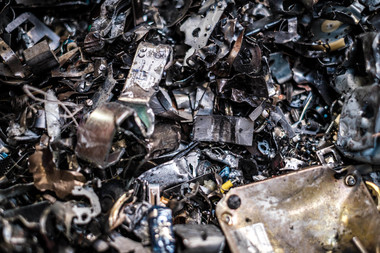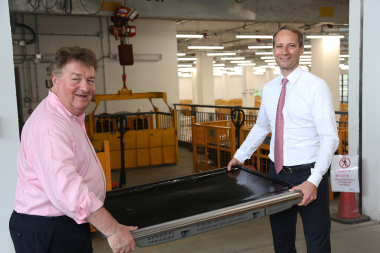A new component of the VDI Guideline 2343 “Recycling of electrical and electronic equipment“ – Part 6
Within the framework of the VDI guideline work, acknowledged rules of technology are drawn up by experts from interested circles in voluntary self-responsibility and in an honorary capacity. In doing so, the goals and principles of VDI Guideline 1000 need to be observed. All legitimate interests must be adequately represented in a Guidelines Committee.
The VDI Guidelines Committee 2343 - “Recycling of electrical and electronic equipment“
Aim of the guideline work is to develop applicable and legally compliant recommendations for action in order to support the work of the circles concerned. In the early days of the Committee, the focus was in particular on the creation of standards for the recycling of electrical and electronic appliances, as legal regulations were still lacking. Today, the Guideline supplements the legal regulations.
The topic of recycling of Waste Electrical (Electronic) Equipment (WEEE) is characterized by the diversity of the materials used, the complexity of the treatment chain and the actors involved. Due to the complexity of the treatment chain, the VDI Guideline 2343 was subdivided into 7 individual parts. The subdivision of the 7 parts follows the logistics flow of (waste) equipment along the recycling chain:
Sheet 1: State of Legislation, Basics and Overview
Sheet 2: Logistics
Sheet 3: Disassembly
Sheet 4: Treatment
Sheet 5: Material and energy recovery and disposal
Sheet 6: Marketing
Sheet 7: Reuse
The guideline parts are published bilingually, in German and English. Part 6, „Marketing“, will appear by the end of 2018 in an official draft, thus the contents of this sheet shall be presented here in more detail.
Sheet 6 “Marketing“
In times of volatile markets and rapidly changing frameworks, the optimal marketing of the substances contained in WEEE is a challenging task. The part Marketing should ensure that the materials contained in waste equipment are reintroduced into the economic cycle after the end of their useful lives. Furthermore, carefully controlled measures need to be employed to protect the environment from the release of substances which are required and useful inside the devices, but harmful otherwise.
In order to provide recommendations for action to achieve this goal, part 6 is subdivided into the following three main chapters:
Legal Part
Technical Part
Recyclable Materials Classification
In the legal part, rules and regulations that are particularly relevant to the marketing of materials from WEEE, are presented in a compact way. Here, the focus is on the transport and export of WEEE.
Within the context of transport law, first of all important legal bases will be summarized in accordance with the Waste Management Act (Kreislaufwirtschaftsgesetz KrWG) and the regulations issued based on it. The topics covered are permission and notification requirements, labelling obligations, burden of proof and sanctions for non-compliance.
The hazardous goods law provides an overview of the most important national (e.g. German Dangerous Goods Transportation Act (GGBefG)) and international (e.g. European agreement concerning the international carriage of dangerous goods by road (ADR)) requirements. Apart from the rules and regulations concerning certain materials, the part Marketing deals with the essential obligations of the interested parties regarding the transport law. It contains e.g. the obligations of the sender, the carrier, the recipient, etc.
In addition to that, the guideline deals with the topic of export of WEEE, which is relevant for marketing, and subject to the regulations of the Law on the Shipment of Waste. Particularly important in this connection are the Basel Convention, the EC-Waste Shipment Regulation (AVV) and the Law on the Shipment of Waste (AbfVerbrG).
In order to determine whether the Law on the Shipment of Waste is applicable, it first needs to be clarified if it is about WEEE and thus about waste. If used equipment is concerned, the Law on the Shipment of Waste and the waste regulations will not apply. The Regulation provides an overview of the distinction between waste and used equipment and deals with the required tests and documents in support. Regarding the shipment of WEEE, it must be determined whether it should be recycled or disposed of. The guideline addresses both options, differentiating between a shipment within the EU and the export out of the EU.
The focus of the guideline’s technical part is on the formation and marketing of fractions in the processing of WEEE. The processing of WEEE pursues two basic goals:
1. WEEE contains a number of hazardous materials and mixtures, which must be separated during processing and directed to safe disposal routes (pollutant elimination)
2. Furthermore, WEEE contains many valuable materials, which should be separated and introduced into an adequate recycling process.
Usually, the treatment follows one of the three methods given below, with process combinations being possible as well:
1. Purely manual primary dismantling
2. Manual dismantling with deep treatment
3. Mechanical treatment
An important decision in waste disposal companies is the choice of the optimal dismantling depth or the decision in favour of mechanical treatment. In this context, part 6 describes which fractions can be extracted from WEEE applying the three methods previously mentioned and which further disposal routes the fractions can take.
It is examined which marketable fractions can be extracted and which fractions subject to additional payments will arise for each of the methods. Where necessary, the fractions subject to additional payments are subdivided into fractions with low content and fractions with high content of hazardous substances.
Various ferrous metals, Al-containing and Cu-containing metals etc. are considered to be marketable fractions from manual dismantling. The ferrous metals are further subdivided into Fe-sheets, Fe-cast etc. By means of mechanical dismantling, similar marketable fractions are gained - sometimes in other forms - which are listed in part 6 (e.g. fractions from magnetic separation).
Fractions subject to additional payment, arising within the context of manual dismantling and considered in the guideline, are e.g. various plastics and plastic-rich fractions, household-type commercial waste, mercury-containing components, chromophore units of printers, etc.
In the technical part, the focus is on the question, which disposal routes the marketable fractions and those subject to additional payment, which usually arise from the three methods (purely manual initial decomposition, manual decomposition with depth treatment, mechanical treatment), will typically take and which typical disposal routes occur. In this context, it is particularly highlighted which value-decreasing substances should be avoided in certain fractions (e.g. fibre optic cables in a fraction with copper cables) or which substances are incompatible when recycled together. Finally, the technical part provides information on further fractions, which can be assigned to these three methods only to a limited extent.
The technical part is followed by a chapter on material systematics, especially on the plastic systematics. In practice, designations such as “plastic sort” or “plastic type” have been inconsistently used so far. Therefore, aim of this chapter is to name the existing classification of materials and to promote a consistent use of such terms in future. In part 6, the materials are classified in stages and the stages are clearly designated. The focus of the considerations is on plastics relevant for the recycling of WEEE. The following figure shows an extract of the plastic systematics of part 6.
According to the plastic systematics, PP, PE and PS, for example, belong to the “plastic type” stage and are termed as such, while PET belongs to the “plastic sort” stage and is also termed as such.
In the annex of the part Marketing, the information on the individual fractions provided in the technical part is summarized again and supplemented by further relevant parts (e.g. waste code numbers, Basel Codes, OECD Codes).
As a result, the annex consists of a comprehensive fraction table, which contains information on the following aspects:
Fraction name
Exemplary origin
Waste code number
Waste designation
Waste designations according to EU Directive 1013/2006
Basel-Code
OECD-Code
Notification requirement Yes/No
Value-reducing impurities (exemplary)
Expected revenue or additional payment
Typical transport units
Typical disposal routes
With this information, the part Marketing provides guidance to stakeholders regarding the formation of fractions from WEEE as well as their further marketing and disposal routes.
Outlook
The VDI Guideline VDI 2343 will be further developed according to the requirements of legislation and practice. Currently, it is possible to help shape the guideline. If you are interested, please contact the chairman of the guidelines committee, Dr. Ralf Brüning.

